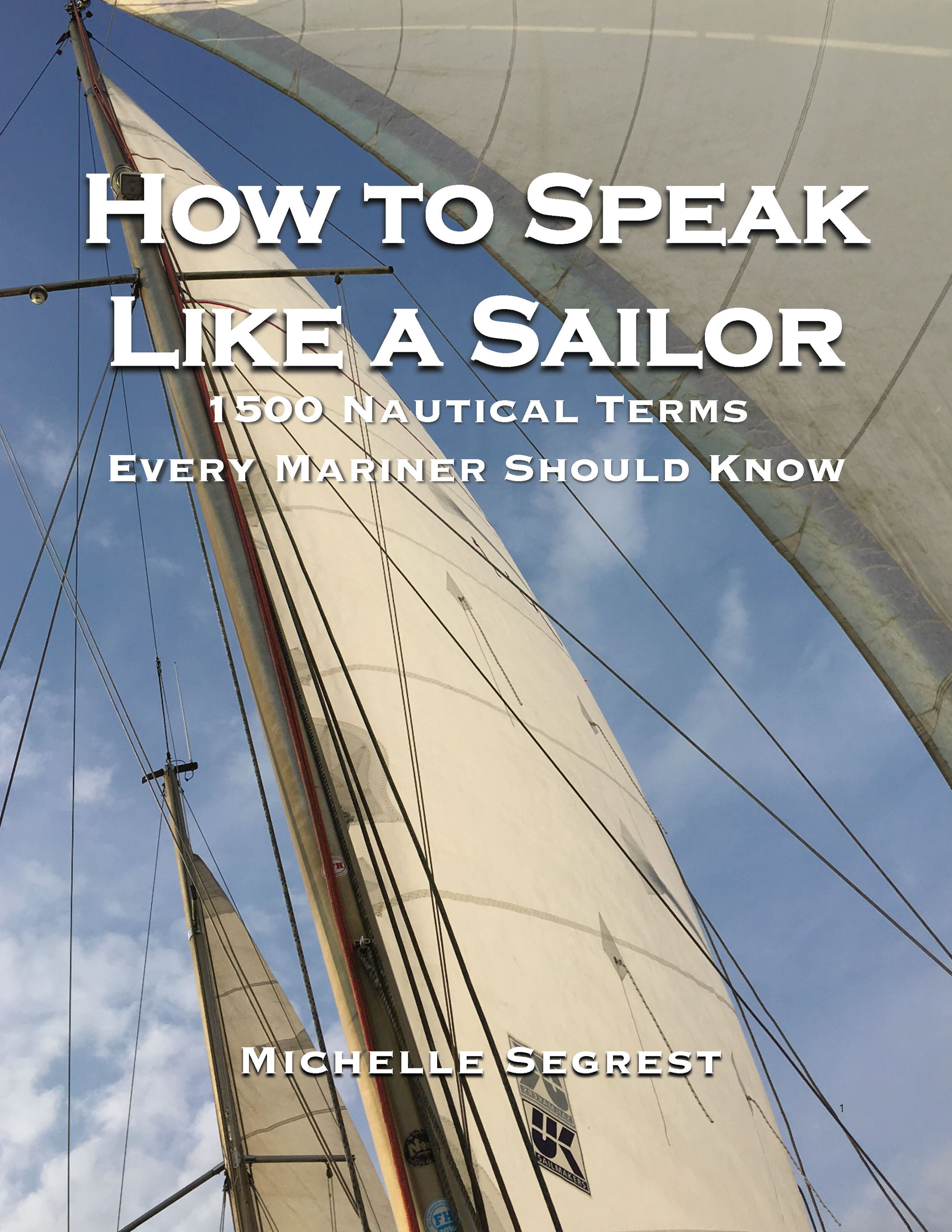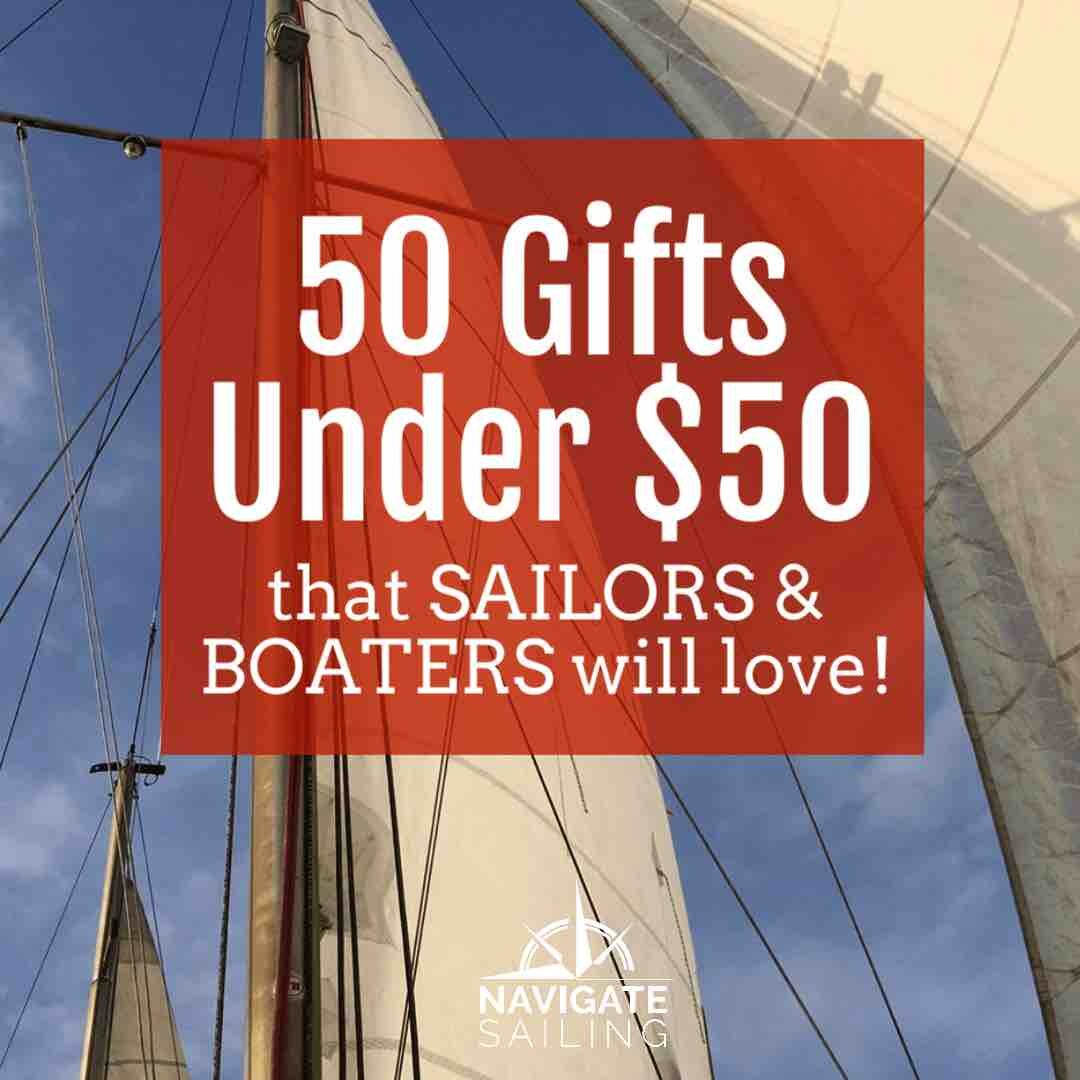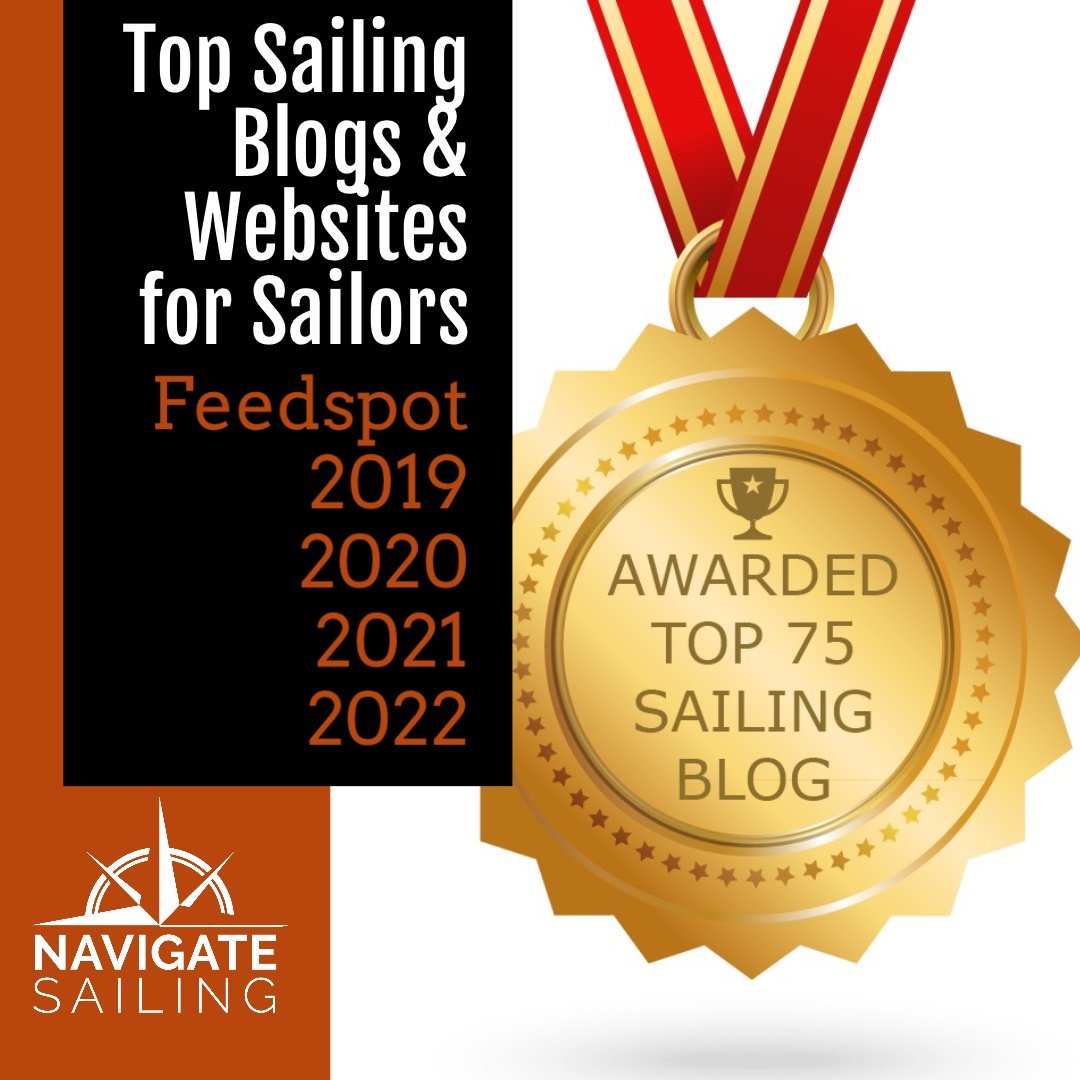How to Plan a Cross-Atlantic Sailing Voyage
/Crossing an ocean in a sailboat requires careful planning and preparation with regard to safety at sea and communication at sea—especially if you plan to sail with dogs. This article presents in-depth information you need to know along with the Top 10 Tips for planning a long-distance sailing voyage.
By Michelle Segrest — How to Get Your Sea Legs
First, let me make one thing clear…. You don’t just wake up one day and say, “Hey, I think I’ll sail across the Atlantic Ocean today.” It takes months and months and months of planning and preparation.
The hardest part is making the decision to go. Then it’s all about setting the date - which is a very strategic decision based on wind, weather, currents, tradewinds, Hurricane season, work schedules, and more. After that, it’s just organization and details. Simple, right?
Well, I’m talking about miles of supplies, mounds of paperwork, and multi-megabites of details! Even though I’m a detail person, this level of detail had my head spinning—but in a cool, groovy, ready-for-the-adventure kind of way.
Preparing the Cross-Atlantic Sailing Route
We spent more than five years dreaming about the voyage but really began the serious planning and provisioning about eight months before embarking on the adventure of bringing our 43-foot, steel-hull, Dutch-designed, ketch Seefalke from it’s home port in Stralsund, Germany to our home on Plash Island in Gulf Shores, Alabama, USA. We planned for a 6,000-plus nautical mile journey that would take us to ports in more than 12 countries and require navigating the challenge of at least eight major bodies of water. We began in the Baltic Sea and traveled to Bon Secour Bay, by way of the Atlantic and the Gulf of Mexico.
We are not full-time cruisers, so we had the additional challenge of having to work while sailing. This requires getting about six-to-eight months worth of work completed in advance and finding a way to work as we sailed. For us, this required taking some breaks to moor the boat and do some traveling for work. We padded our itinerary accordingly.
We also needed our plan to include outrunning the Baltic Sea and North Sea winter, navigating the traffic of the English Channel (the world’s busiest shipping area), and facing the brutal and challenging wind and waves of the Bay of Biscay before we ever even sailed to the Canary Islands to catch the tradewinds across the Atlantic. Of course, we also needed to avoid Hurricane Season. All of these were major parts of our very-detailed route planning.
I had never dreamed of the complexity of this level of fine lines, excel spreadsheets, and checklists. I’ll be the first to admit, it was extraordinarily overwhelming at times. But we forged ahead in search of this grand adventure.
Our greatest resource was The Atlantic Crossing Guide, by Jane Russell (Adlard Coles; 7 edition (February 27, 2018). And it did not go unnoticed by me that in the introduction, Russell describes experiencing eight straight days of seasickness while crossing the Bay of Biscay. We endured four straight days and that was more than enough! I did, however, learn many ways to beat seasickness without medication.
Preparing the Sailing Crew to Cross an Ocean
I am the novice. I’ve only been sailing since 2013. I’ve logged most of my nautical miles on The Baltic Sea on Toja, a 24-foot Flying Tramp. I’ve also spent a lot of time on our small, wooden, day sailer, Protagonist, but I’ve never experienced a journey like this. As a novice, I recorded the good, the bad, and the ugly of a year-long sailing journey from the perspective of a novice sailor. The captain of our ship is the more experienced sailor. A veteran of the German Navy, he had been sailing for more than 20 years with many solo sails on challenging waters in his logbook. He actually taught me how to sail so that I could share sailing tips for beginners.
We had a very seaworthy sailing vessel, Seefalke. With her steel construction and long keel, she was built for a journey like this. We also took along with us a four-legged crew—our two Seadogs, Cap’n Jack Sparrow and Scout. Our beagles have been sailing since they were four months old, and we would not consider taking this journey without them.
We had been dreaming of a trip like this for more than five years. But we finally set the date about eight months before our planned departure of August 1, 2018. There were many details to take care of in preparation, and we only missed our sailing voyage departure date by 18 days.
Preparing the Ship for a Cross-Atlantic Sailing Voyage with Safety First
Let me emphasize that first and foremost, the most important part of the planning was making sure the vessel was SAFE and ready to sail. The creature comforts are secondary and not even all that important really. Safety is the name of the game.
The good news for our voyage was that the first several months were spent on the Germany/Denmark/Netherlands/United Kingdom coasts and along the European Atlantic coast. This means we were close to ports where we could get spare parts, service the boat if needed, make repairs, and collect provisions. We focused on making sure the hull and engine were in good shape. We overhauled the entire electrical system, retrofit the vessel with wind and solar power, and secured all the appropriate licenses, certifications, safety checks, weather and navigation equipment, communication equipment, and all the technical details needed to make the boat and the crew SAFE to make the journey.
During this process, Seefalke looked like she had been prepped for surgery. She was practically sliced down the middle with all her innards exposed, ready for dissection. The 43-foot, Dutch-designed ketch was built in 1974. And while extraordinarily seaworthy, she was in desperate need of some updating and retrofitting in preparation for our voyage.
The bottom was protected with anti-fouling paint, and electricians replaced, reorganized, and rerouted all the wires throughout the entire vessel to get her ready for a few organ transplants.
We were sold on using a Hydrovane wind pilot, but the mechanics couldn’t find a good place to install it. So we used that budget for a new plotter/auto pilot. This allowed us to power the steering with energy created by the wind and consume significantly less energy than the antique auto pilot we originally had.
While Seefalke was already open, we took this opportunity to install a data bus system. This way, if and when in the future we want to install or replace old gauges or other devices we can easily integrate them with this globally standard unit. They can all communicate with each other no matter the brand or country of origin. We used our tablets to remotely control the ship. We were able to check things like the battery or tank levels, charts, and auto-pilot headings from the tablet.
We supplied the navigation station with an entire library of paper charts.
We took two van loads of supplies to Stralsund, and also “borrowed” all the appropriate and usable equipment from our 24-foot Flying Tramp, Toja. She wouldn’t be in the water during this voyage at all, so we were able to borrow some tools, life vests, a slightly-in-need-of-patching dinghy, and other safety equipment. We spent some time emptying out all the lockers and reorganizing all the supplies.
We were able to make some serious decisions about things we needed and things we didn’t need. On a vessel like this for a journey like this, it’s important to make practical use of every single square inch of space possible, and only use those precious inches for the things that are absolutely essential. While restocking the lockers, we created a very detailed inventory of each locker. We used this to find all these essentials quickly when we need them.
How to Prepare Pets for a Cross-Atlantic Sailing Voyage
We made a decision that we could not possibly make this journey without our Seadogs—Cap’n Jack Sparrow and Scout. Our beagles were 18 months old when we set sail, and we just couldn’t imagine leaving them behind for a year. They are great sailors and love being on the water. For us, it was a no brainer. But this decision added a massive amount of details to the planning because had to add to our already long list knowledge about how to sail with dogs.
First, we had to cross the Atlantic by airplane with dogs—we had to get them from Gulf Shores, Alabama to Germany. I originally thought we could just call an airline and book a couple of pup tickets. Easy, right? People do it all the time.
My bubble was burst very quickly.
Airlines don’t do this anymore. Trust me. I called ALL of them. I learned quickly that for a dog to travel overseas on any airline, you must employ the services of an IPATA-approved pet carrier. This is now a requirement on ALL airlines. There are many capable carriers, and we found a fantastic one—Pet Air Carrier, of Alpharetta, Georgia. Since I was taking a direct flight from Atlanta to Frankfurt, I liked the idea of having a service that is local. These guys helped us with every detail. They helped to secure all the appropriate paperwork and even helped us correctly measure the size of our airline-approved pet carriers. We ordered nice ones from Petmate, and are already worked hard to help the beagles to get comfortable with them.
We worked with our regular veterinarian, Dr. Niesje Langston of Langston Animal Clinic in Gulf Shores, to secure the proper USDA-stamped health certificate, microchip, rabies vaccination, rabies titer, flea and tick treatment, heartworm treatment, and all the other appropriate pup details. She also helped us to create a doggie first-aid kit.
Pet Air Carrier met us at the airport in Atlanta and made sure the pups were checked in and secured correctly. They also arranged to have a pet customs broker help us out when we arrived in Frankfurt. I was much more nervous about transporting the Seadogs by air than by sea, although the sea details are also long and laborious. We used Lufthansa as our airline, and they have a fabulous Pet Lounge. They are famous for making safe and comfortable transports for canine family members.
Once we got them to Europe by air, the European part of our adventure was relatively hassle free. The European Union is very pet friendly. You can bring pets on trains, and most public transport, and they are even welcome in most shops and restaurants. Still, each port had some requirements, like the microchip, rabies vaccination, and health certificate as a minimum. We also acquired a European Pet Passport. We pulled information from multiple online resources, including www.bringfido.com and individual country tourism websites to create a massive chart detailing all the requirements for all the countries we may be visiting.
NOTE: Since originally writing this blog, we have published an ebook, How to Sail with Dogs—100 Tips for a Pet-Friendly Voyage. Through our exhaustive research and real-life experiences sailing the world with two beagles, we share 100 tips about how to plan, prepare, and potty train for fun, safe sailing with your four-legged crew members. Learn about traveling with pets by air and by sea, potty training and exercising on board, first aid at sea, establishing routines, and keeping your pet SAFE! We also cover detailed customs requirements for U.S.- and European-based dogs entering into dozens of countries in Europe, Northwest Africa, Atlantic South America, the Caribbean, Central America, and North America.
Communication Onboard a Sailing Vessel for a Cross-Atlantic Voyage
We worked out ways for some communication during our journey. We purchased a Thuraya Satsleeve Plus satellite phone system to keep us somewhat connected when we didn’t have regular mobile service and for about 1,000 nm from the Canary Islands.
It allowed us to send and receive text-email communications with our family and friends. We could make calls out, but calls coming in were ridiculously expensive for the sender and the receiver, so we saved that for only serious emergencies. Don’t call us, we’ll call you.
This device works like a hot spot. It turns your mobile phone into a satellite phone. On the other side of the Canary Islands, we used the Iridium Go Satellite Based Hot Spot.
We also invested in a very cool Garmin inReach satellite tracker that allowed us to send coordinates of our location using the Iridium satellite network. There is no capability to talk to people using this device, but we could send and receive text messages via email addresses.
Preparation for Living Onboard a Sailboat
In the meantime, we updated our vaccinations and acquired appropriate visas. Many countries we visited have vaccination requirements for all living things who want to enter. For me, I got Hep A, Hep B, Typhoid, Tetanus, Diphtheria, and Pertussis vaccinations. Cap'n Jack and Scout had their microchips implanted and rabies vaccinations, but also had to get a rabies titer. Meanwhile, we worked on getting USDA-certified health certificates for them.
It was difficult to plan for the clothes to bring for extreme cold and extreme heat conditions. I had my tiny, Navy-issue sailor’s duffel bag that we bought from the local military surplus store. I was told by the captain that I could bring anything on board that would fit into this bag, so I perfected my folding and stuffing skills. I also researched a lot about rationing fresh water supply and how to manage trash on board.
The bottom line is that the detail planning includes the boat, the pups, and the people—in that order. Planning a passage like this is kind of like having a baby. You have to plan and prepare for the details, and the budget. And just like having a baby, most humans can’t just plan for and finance something like this in one shot. We had to strategically budget and plan over a very long period of time.
But just like having a baby, if you wait until you are completely ready, have all the money you need, and have everything in order that you may possibly need, you will never do it. Our advice is to spread the budget over many months, or even years, as we have, and focus the planning on the most important element—SAFETY. The rest should fall in line as you go. And just like having a baby, the rewards will tremendously outweigh the preparation required.
Top 10 Tips For Planning a Cross-Atlantic Sailing Voyage
The hardest part is making the decision to go. The next step is setting the date and getting started on the many months of planning and preparation.
Plan your route, but be prepared to make adjustments along the way. Consider the time of year and weather conditions as a top priority.
Consider investing in helpful resources like The Atlantic Crossing Guide, by Jane Russell (Adlard Coles; 7 edition (February 27, 2018).
Make the SAFETY of your ship and crew the top priority.
Consider things like solar panels and a wind generator to make the voyage more sustainable.
If sailing with a pet, be sure to research entry requirements, health requirements, and provision for all the essential things your pet will need on board. Consider reading How to Sail with Dogs - 100 Tips for a Pet-Friendly Voyage, which is the most comprehensive resource for sailing with dogs.
Prepare for communication equipment you may want to have on board.
Get all the required vaccinations and paperwork for humans and pets.
Begin to prepare with items you may need on board, including clothes, food, and equipment.
Make a budget, spread it out over several months, and don’t be surprised when you go WAY over the budget. Most sailors will tell you that a cross-Atlantic sailing voyage costs “what you’ve got.” It can be done on a small budget or a huge budget. But be prepared with some ideas of what it will cost and expect that it will be more than that, most likely.
If you like this article about preparing for a Cross-Atlantic Sailing Voyage, please PIN IT!
This page contains affiliate links. If you click on the product links and make a purchase, it allows me to make a small commission at no extra cost to you! Thank you for your support and I hope you find value in this content!





























